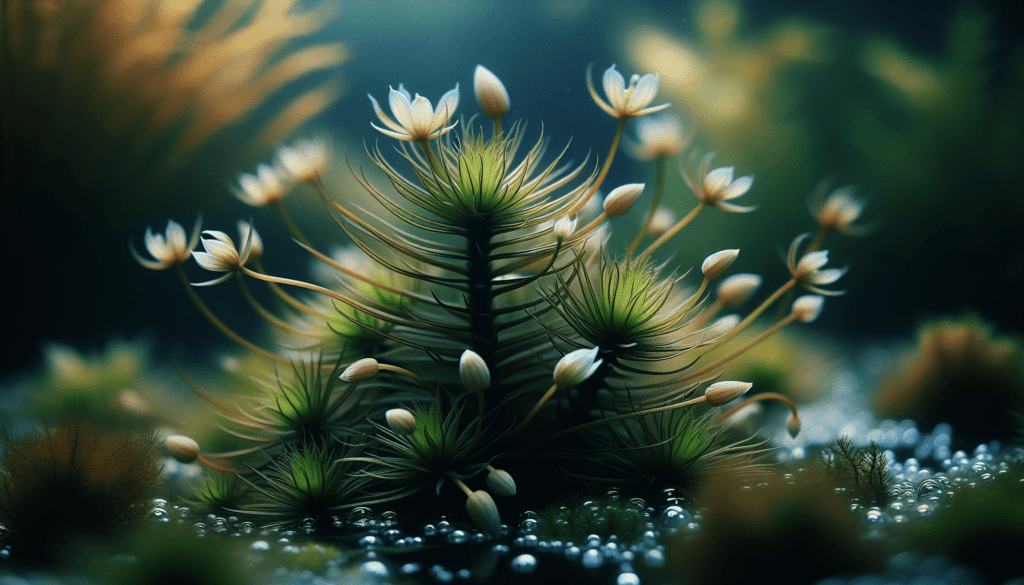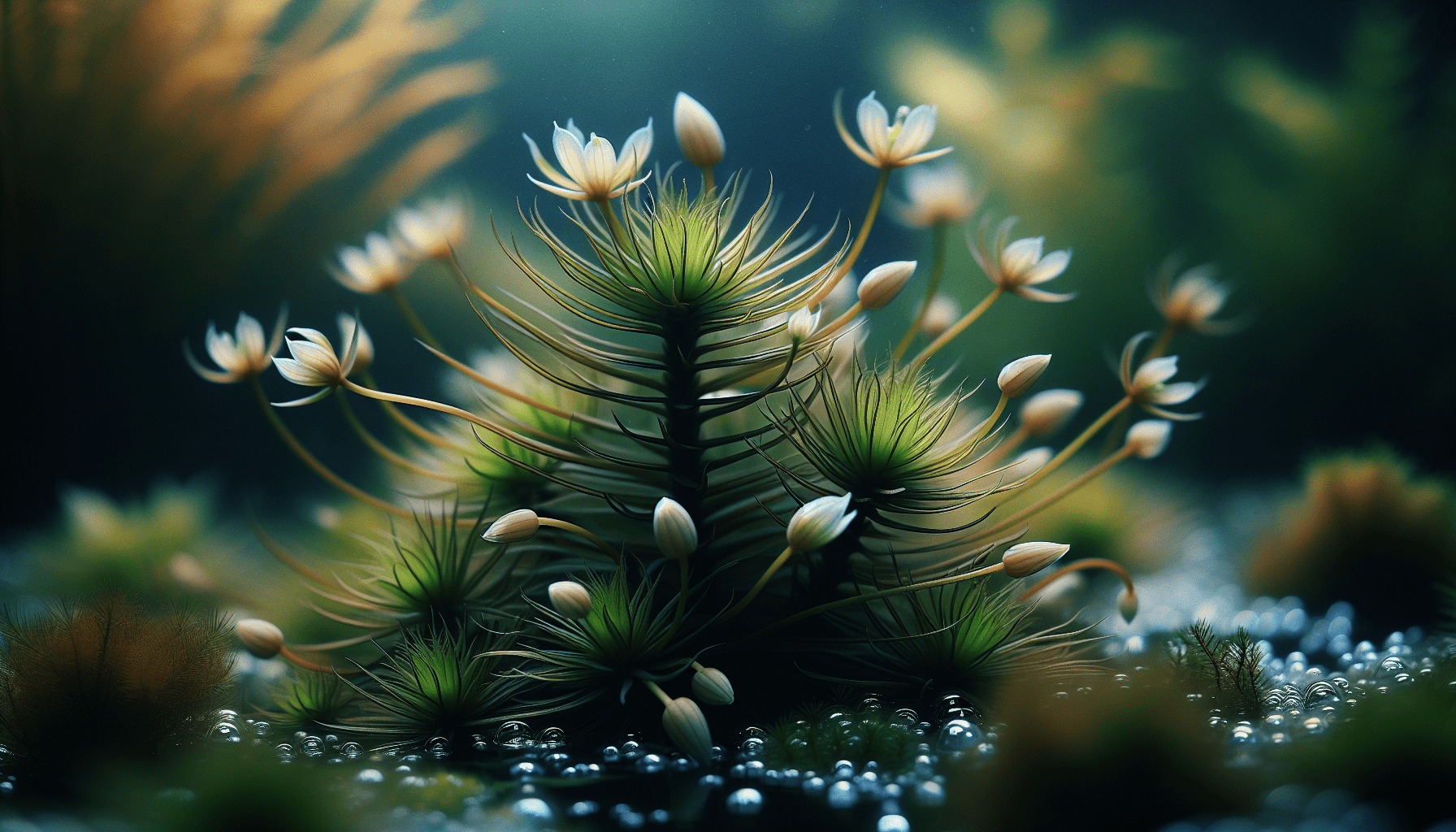In the realm of aquatic botany, one plant stands out due to its unique structure and adaptability – the Callitriche Brutia. You might find this aquatic macrophyte unassumingly growing in various freshwater habitats, from ponds and streams to temporary pools, displaying its prowess in providing vital ecosystem services. This article aims to shed light on the Callitrich Brutia, a fascinating, yet often overlooked, plant, imparting an understanding of its biology, environmental significance, and potential applications. As you embark upon this exploration of the Callitriche Brutia, prepare yourself to gain in-depth insights into this aquatic gem.

Definition of Callitriche Brutia
Callitriche Brutia is a particular species within the Callitriche genus, a group of plants collectively referred to as water-starworts. In this genus, there are about 25 species of aquatic or semi-aquatic plants that exist, and Callitriche Brutia is just one of them. They are part of the Plantaginaceae family and are classified as an aquatic plant due to their adaptations and growth habits which allow them to thrive in watery environments.
Scientific classification
From a scientific perspective, Callitriche Brutia falls under the kingdom of Plantae, the division Tracheophyta, and the class Magnoliopsida. Further, it belongs to the order of Lamiales, the family Plantaginaceae. The genus that it forms a part of is called Callitriche with the species being labeled as Brutia. Thus, scientifically speaking, it is referred to as Callitriche Brutia.
Common names of Callitriche Brutia
Although Callitriche Brutia is the established scientific name, this plant is also commonly referred to as the Mediterranean water-starwort due to its prevalence in Mediterranean regions as well as its star-like appearance.
Origin and distribution
The Callitriche Brutia species originally hails from Europe, with a specific concentration in the Mediterranean Basins. It can be specifically found in the areas surrounding France, Italy, Greece, and the Iberian Peninsula. Apart from this, the plant has been observed to spread to North Africa and Western Asia as well.
Physical Characteristics of Callitriche Brutia
The Callitriche Brutia exhibits several distinct traits that make it recognizable amongst other aquatic or semi-aquatic plants.
Overall structure
Overall, Callitriche Brutia has a simplified but functional structure. It is characterized by its dense, mat-like growth habit, where shoots with minute leaves thrive either submerged or floating on the water surface.
Leaves description
This water-starwort’s leaves are small and oblong in shape, usually arranged oppositely along the stems. The leaves are usually green to dark green in color depending on the growing conditions. The surfaces of the leaves are smooth and exhibit a glossy sheen, especially when grown underwater.
Flower and seed description
Flowering is a significant aspect for Callitriche Brutia, known even more for its minute and unisexual flowers. These flowers principally exist at leaf axils and blossom primarily from late spring to early autumn. Seeds are mostly produced during the later stages of this period, which are small and often carried away by the water current, thus aiding in its propagation.
Underwater and above water differences
Interestingly, Callitriche Brutia foliage and growth habit can differ significantly depending on whether it grows above or beneath the water. Above the water, the leaves are thicker, more spaced out, and the plant becomes more erect. When growing underwater, the plant has thinner and densely packed leaves on long, supple stems that move with the water current.
Habitat Requirements of Callitriche Brutia
Callitriche Brutia is an adaptable species with certain preferences in its aquatic habitat that maximize its growth and propagation potential.
Water conditions
Generally, this plant prefers calm or slow-moving waters where it can establish its dense web of shoots and leaves. It can thrive in a relatively wide pH range, although it is typically found in neutral to mildly alkaline waters.
Soil preferences
As an aquatic plant, Callitriche Brutia grows best on waterlogged or fully submerged soils. The plant does not necessarily demand nutrient-rich soils, but it can take advantage of areas with enough organic matter to anchor itself and obtain needed nutrients.
Environmental conditions
The preference of this species leans towards warm climates, which is why it is extensively encountered in the Mediterranean regions. It can endure some temperature variations but is more susceptible to colder environments where it can undergo partial or even full die-off.
Preferred ecosystem
Callitriche Brutia commonly resides in freshwater ecosystems, predominantly in streams, shallow ponds, ditches, canals, and marshes.
Life Cycle of Callitriche Brutia
Understanding the life cycle of Callitriche Brutia includes its mode of propagation, growth rate, and main lifecycle related changes.
Propagation methods
Its primary propagation method is through seeds. However, this plant can also reproduce vegetatively, as fragments that break off can root and establish a new plant. This makes it highly resilient and capable of colonizing areas quickly.
Growth rate
Depending on the conditions, the growth rate of Callitriche Brutia varies. In optimal conditions, this plant can experience rapid growth rates, quickly establishing dense growth in an area.
Seasonal changes and lifecycle stages
The plant is perennial, meaning it can survive for several years. It can, however, behave as an annual in colder climates where it dies off in the winter and regenerates from seeds in the summer. The main life cycle stages are the vegetative phase, flowering, seed setting, maturation, and senescence.

Ecological Role and Importance of Callitriche Brutia
Callitriche Brutia plays numerous ecological roles, contributing significantly to the environments where it thrives.
Food source for aquatic life
Aquatic species like invertebrates, waterbirds, fish, and frogs frequently consume parts of the plant for nutrition. Eggs and larvae also find the plant a suitable site for shelter and development.
Contribution to water quality
By utilizing nutrients, especially excess nitrogen and phosphorus, from the water, Callitriche Brutia can help improve water quality. It also provides oxygen into the water through its photosynthetic processes, thereby promoting conditions conducive to aquatic life.
Role in ecosystem stability
Through its dense growth, it aids in stabilizing the bottom sediments, limits soil erosion, and fosters a favorable habitat for other aquatic and semi-aquatic life forms.
Cultivation and care of Callitriche Brutia
Efficient cultivation and care of Callitriche Brutia require some knowledge of its ideal growing conditions, care routines, and common diseases or pests.
Ideal growing methods
In nature, propagation is usually through seeds or fragmentation. In a controlled environment like a pond or aquarium, stem cuttings can be planted in submerged soil or allowed to float until they root naturally.
Pruning and maintenance
Due to their rapid growth, frequent pruning is necessary to manage its spread. The plant is relatively low-maintenance and can handle variable water conditions.
Common diseases and pests
Callitriche Brutia are generally robust with minimal susceptibility to diseases. Some pests like snails and certain species of aquatic caterpillars might feed on the plant but are rarely damaging.
Tips for healthy growth
Maintaining good water quality, preventing overcrowding, regular pruning, and situating in a place with adequate sunlight can ensure the healthy growth of Callitriche Brutia.
Use in Aquascaping and Aquariums
Callitriche Brutia is often used in both aquascaping and aquariums due to its unique attributes and benefits.
Benefits for aquariums
Callitriche Brutia serves as an excellent protective and breeding area for fish, in particular for egg-laying species. It also provides a natural and aesthetically appealing element to the aquarium and aids in maintaining water quality.
Instructions for adding to aquariums
Planting should be done in a manner that allows the plant to root finely to the substrate. Alternatively, it can simply be allowed to float on the water surface where, given time, it will then establish roots.
Impact on water chemistry in aquariums
Beside contributing to the oxygenation of water, it helps to reduce harmful nutrient levels in the tank, thus improving water quality and contributing to the overall health of the aquatic system.
Use in Phytoremediation
Insightful as it may be, Callitriche Brutia is also well-known for its use in phytoremediation, indicating its environmental value.
Explanation of phytoremediation
Phytoremediation is the technique of using plants to detoxify or remove pollutants from an environment. These pollutants often include harmful substances like heavy metals, pesticides, and other organic compounds.
The role of Callitriche Brutia in phytoremediation
Callitriche Brutia has proven efficient in extracting certain pollutants from the water column. Specific research indicates that the plant can accumulate and tolerate some level of heavy metals, showing its significant potential for use in phytoremediation efforts.
Current research in this area
The potential of Callitriche Brutia in phytoremediation is a continually growing field of research, with multiple studies conducted to investigate its tolerance and uptake capacity for various pollutants. Current results show promising prospects for its role in environmental restoration and improvement.
Threats to Callitriche Brutia
Despite being a resilient species, Callitriche Brutia also faces several threats, largely man-made.
Threats from pollution and habitat changes
Water pollution, particularly through agricultural runoff and urban wastewater, presents a significant threat since it can be toxic for the plant. Also, changes in the aquatic habitats due to land-use modifications and water extraction critically impact the survival of this species.
Impact of invasive species
Callitriche Brutia can face competition from invasive plant species introduced into their environment, which can threaten their existence by taking over their habitats and resources.
Conservation status and efforts
Given these threats, several conservation efforts are in progress, although most are at a local scale. These efforts largely aim to protect and restore existing habitats, ensure water quality, and manage any competing invasive species.
Relation to Other Callitriche Species
Callitriche Brutia, while distinct in many aspects, also shares certain traits with other members of the Callitriche genus.
Comparison of physical characteristics
Callitriche Brutia is similar to other Callitriche species in terms of its overall appearance, characterized by the mat-like growth of small leaves on long, lax stems. However, several distinctive features help differentiate it from others, largely leaf shape and size, growing conditions, and specific adaptative traits.
Habitat differences
While all Callitriche species grow in water or waterlogged soils, some thrive better in specific conditions or locations.
Ecological role comparisons
Most species within the Callitriche genus share similar ecological roles, primarily as habitats and nutrition sources for various aquatic organisms. Differences may stem from the particular ecosystem and the varying local biodiversity dynamics. Overall, the Callitriche Brutia embodies a fascinating mix of adaptability, ecological value, and practical use, making it a remarkable member of the aquatic world.
